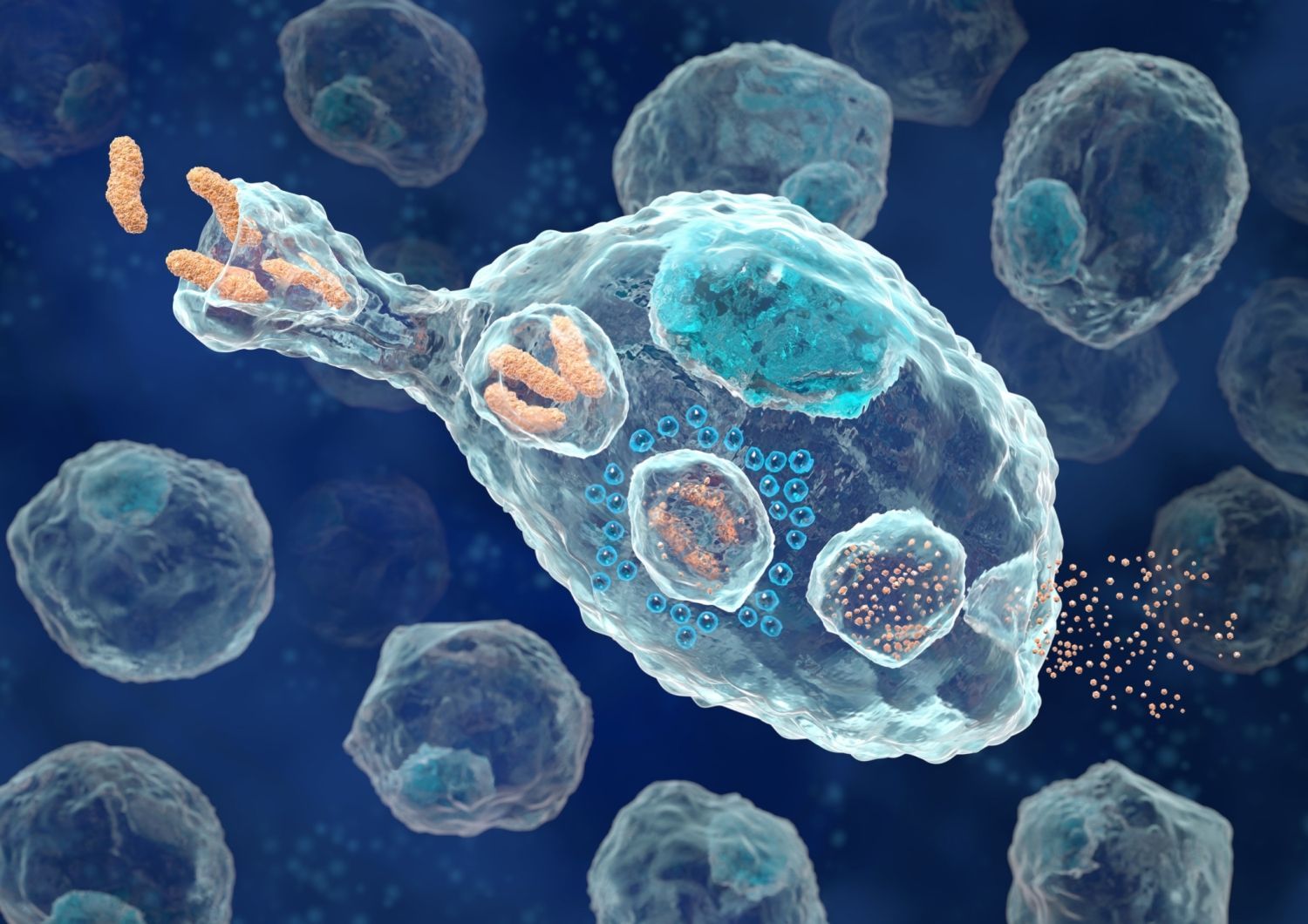A look into the immunological landscape of the tumor: the Tumor Associated Macrophages
The undisputed protagonists of most immunotherapic strategies are cytotoxic lymphocytes (CTL) that can recognize and eliminate tumor cells, impairing cancer progression and metastasis dissemination. However, CTL are not the only immune population interacting with the tumor. The cancer “immune landscape” is far more complex and includes a mosaic of different cells that exert both anti- and pro-tumor functions. Each patient has its own immune landscape, which explains the variability in responses to therapy and can become a target for new drugs. What is in there besides lymphocytes?
Tumor Associated Macrophages (TAM) are an interesting immune population included in most solid tumors. Their infiltration correlates with a poor prognosis, because they suppress CTL functions, indirectly promoting tumor progression. Research on immunotherapy is focused on restoring or potentiating the cytotoxic functions and in fact, most drugs are designed on CTL. In order to make such drugs even more effective, one possibility may be to target in parallel the immune suppressors in the tumor microenvironment. How can we intrude on this microscopic war between immune cells, fought with cytokines and chemical mediators?
There are at least three therapeutic approaches against TAM-mediated immune suppression.
Keeping them away
If we do not want TAM to mess up with the anti-tumor functions of CTL, one solution is to keep them away from the tumor site. Before infiltrating the tumor, macrophages are circulating cells called monocytes, which are recruited from the bloodstream via a particular receptor, called CCR2. The blockade of CCR2, or other receptors associated with TAM survival and proliferation, can suppress their accumulation in the tumors.
Turning them into allies
Not all macrophages come to harm! These immune cells are very “plastic” and can exert different and sometimes opposite functions, depending on the chemical factors or differentiation signals that they encounter, during maturation. Not only their phenotype changes, but also their interaction with cytotoxic lymphocytes and, therefore, their impact on the tumor. With the right “recipe”, we can transform bad macrophages into good ones: the immunosuppressive TAM can become supportive cells that promote anti-tumor immune response.
Targeting their “weapons”
How do macrophages suppress T cell activities? The precise mechanisms are still unclear, but several studies suggest which molecules and mediators may be involved. Macrophages not only produce some of them on their own, but they also recruit other immune suppressor cells in the tumor site. Elucidating such mechanisms may be an important step forward to design inhibitory drugs that block these signalling molecules, depriving TAM of their weapons.
When it comes to immunotherapy, we cannot face all the problems from only one point of view: the cancer immune landscape is extremely complex and we cannot target only one population without considering the others. In addition, as far as TAM are concerned, we must be particularly careful due to their double-sided nature as both pro- and anti-tumoral effectors. Vitares supports research activites that explore the labyrinthine and chaotic landscape of the tumor: we still need to learn which gears should or should not be touched and which factors should be considered when designing new therapies.
Erika Salvatori
Reference:
Cassetta, L. and Kitamura, T. (2018). Macrophage targeting: opening new possibilities for cancer immunotherapy.
cytotoxic lymphocytes, Macrophages, TAM, Tumor Associated Macrophages



